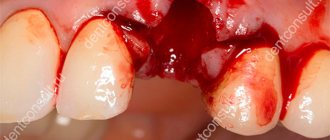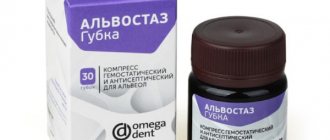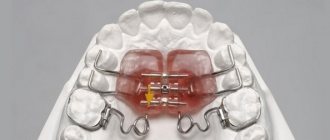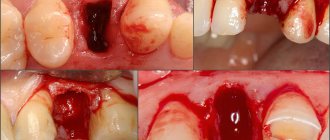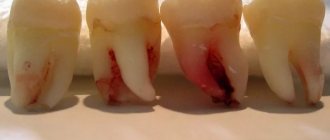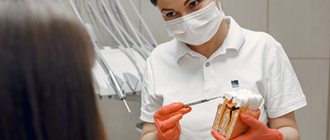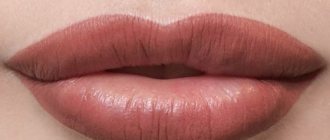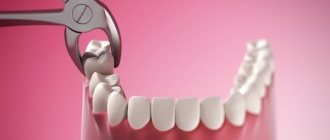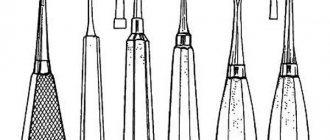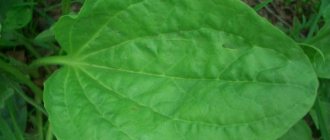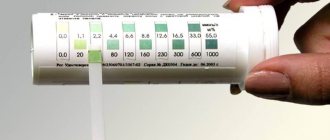The hemostatic sponge is an important tool in the home and travel first aid kit and the best assistant to the surgeon. When used, it is possible to quickly stop bleeding. Today, hemostatic sponges come in a huge variety. They can be easily selected in size depending on the conditions of use.
What is a sponge for?
The thing is that for “healthy” healing, the postoperative hole must be “closed” with a blood clot (thrombus). If this does not happen, the wound will heal much more slowly, and the likelihood of complications increases several times. Thus, the formed blood clot is a kind of biological bandage that does not allow saliva containing pathogenic microorganisms to “attack” the empty socket.
But there are times when after surgery a blood clot does not form (dissolves), and blood begins to flow from the wound. Most often, this abnormal phenomenon is associated with damage to bone tissue during surgery. But along with this, there are other reasons:
- bleeding disorders;
- active inflammatory processes in the postoperative wound (on the gums);
- injuries of large vessels;
- damage to the blood clot itself, blocking the hole;
- taking certain medications;
- non-compliance with the dentist’s recommendations for caring for the oral cavity in general and the wound in particular after extraction.
Pharmacies offer a wide range of GGs, which contain medications.
It is to eliminate postoperative bleeding from the socket that a hemostatic sponge (hereinafter referred to as HS) is used.
What it is
A hemostatic sponge is a medical device made in the form of a compact block of porous natural material that looks like a sponge or sponge. A device is used to stop bleeding and accelerate tissue regeneration during surgery.
The product is used as a wound dressing, closing the cavity, keeping the hole sterile and stimulating the formation of a blood clot. Stopping bleeding occurs by absorbing excess blood and wetting the sponge. The sponge increases in size and compresses the walls of the hole, pinching the capillaries.
There are two types of devices:
- Cubes with dimensions 1x1x1 cm.
- Blocks (10x10x1 cm).
The required piece of sponge is cut from the block or cube using scissors or a scalpel. The final shape of the sponge is modeled taking into account the characteristics of the wound and needs.
Release form
GG is a soft elastic porous plate with a faint odor of acetic acid. After the hemostatic sponge is inserted into the hole, it absorbs liquid, swells, and increases in size. As a rule, GGs are produced in 2 standard sizes - 50 X 50 mm, 100 X 100 mm.
Since this product has a characteristic porous structure, it can absorb a volume of liquid 30-40 times larger than its own. At the same time, the collagen sponge does not allow the formed protective blood clot to dissolve (thanks to the Ambien present in its composition).
Biological dressing Digestol
Biological dressing "Digestol" - Self-absorbing collagen wound coverings with a cleansing and antibacterial effect, are highly porous white or cream-colored plates with a specific odor, made from a mixture of natural collagen biopolymer and trypsin-like enzymes digestase and collagenase (from the hepatopancreas of the Kamchatka crab). Ingredients: collagen at least 80%, digestase enzyme (collagenase) at least 1%, purified water Area of application: Complex treatment of purulent wounds, trophic ulcers, treatment of infectious and inflammatory diseases of the oral cavity, complications of diabetic foot syndrome. It has a rapid hemostatic effect by stimulating platelet aggregation and an antimicrobial effect by destroying the walls of bacteria. For the complex treatment of purulent wounds, burns, trophic ulcers, bedsores, gunshot wounds, treatment of infectious and inflammatory diseases of the oral cavity, complications of the “diabetic foot” syndrome in surgery, tamponing of sockets in dentistry. Has a cleansing and antibacterial effect. It has a rapid hemostatic effect by stimulating platelet aggregation and an antimicrobial effect by destroying the walls of bacteria. Dimensions 100x100x5 No. 1, 50x50x5 No. 1, 10x10x5 No. 10. pH of the aqueous extract: 5.0-7.5 Sterile, single use Sterilization: radiation Guaranteed shelf life of the plates from the date of sterilization: 3 years. Manufacturer: ZAO “Zelenaya Dubrava” , Russia Price: on request
Types of GG
There are two main types of sponges - those made from donated blood and those made from blood, tendons, blood, bones of cattle. The blood contains the following active components, such as thrombin, thrombokinase, and salts. It is thanks to these substances that the healing properties of GG are ensured.
Antibiotics for tooth extraction
Based on additional components, sponges are divided into:
- collagen (based on cattle bones and tendons);
- gelatinous (contains only livestock bones);
- amben (with elements of human blood plasma, sold only with a doctor's prescription).
GG may contain Furacilin, Nitrofural, boric acid and other medicinal components. Depending on the composition of GG, you can find products in pharmacies in different packages and with different names. As a rule, these are sealed blisters with one plate. Ambien tampons are packaged in dark glass vials.
Hemostatic sponge - instructions for use
This medication is intended for external use to pack an open wound. The dry substance-solution is applied over the open wound, then wait a few minutes. During this time, the hemostatic sponge fills with blood and the bleeding stops. Its edges fit tightly to the wound, but for greater reliability it is better to use a second sponge on top of the first. When the hemorrhage has stopped, the treatment agent is fixed with a U-shaped suture and a bandage is applied. To enhance the effect, the sponge must be moistened with thrombin solution.
If you use a hemostatic sponge with Ambien, the rules for use are somewhat different. The contents of the bottle are intended for tamponing the cavity of an open wound, and the product itself must be held with a surgical instrument and a gauze swab for 5 minutes. You can leave a layer of gauze in the wound for a short period of time, but it must be removed the next day. A hemostatic sponge after tooth extraction is used exactly according to this principle. The attending physician will advise you on the correct choice of prescription and intensive therapy regimen.
- Cook something tasty and unusual: recipes
- How to become a flight attendant at Aeroflot
- Fasting days for weight loss and diets
Side effects
Not all patients are allowed to stop bleeding using a hemostatic sponge, since side effects may occur in the form of allergic, local reactions on the skin. This is itching, burning, redness, increased swelling of the dermis. Therefore, if the body is hypersensitive to the active substances, it is better not to use the drug after surgery and during intensive care. In addition, doctors do not exclude the risk of secondary infection. Detailed instructions for using the hemostatic sponge do not report other side effects.
Contraindications
If the surface of the dermis is damaged, not all patients are allowed to use this inexpensive drug, since there are medical restrictions. For example, in case of arterial bleeding from large vessels after resection, it is better not to use a hemostatic sponge. This drug should be prescribed to a child with caution, but it is strictly prohibited if the body is hypersensitive to the active components. So dissolving the product in the cavity of an open wound does not help all patients, as stated in the detailed instructions.
Storage conditions
The sponge must be stored in a dry place, since with high humidity this medicine will soon become unusable. The instructions say that such a local antiseptic should not fall into the hands of children or be used for other purposes. Self-medication is possible, especially if you immediately need to stop heavy bleeding. There is an expiration date written on the packaging, which is also important not to violate, otherwise you may not get the desired result. The family first aid kit is the best place to store a hemostatic sponge.
Rules of application
GG is used topically for wound packing. So, first you need to cut off the required amount of the product and place it in an empty hole. Within 5–7 minutes, the sponge fills with blood, increases in size, and completely covers the wound. If one layer of GG was not enough to stop the bleeding, you can put another agent on top. The “lower” sponge remains in the hole until the end, but the upper ones can be changed until the bleeding from the wound is completely stopped.
When the blood has stopped, the GG is fixed with a suture and treated with thrombin solution to enhance the clinical effect. It is noteworthy that in addition to dentistry, hemostatic sponges are widely used in other medical fields to stop local bleeding. Self-resorbable GG with medication is also used for preventive purposes.
Only a dentist can place GG into the deep layers of a postoperative wound
It is noteworthy that sponges do not react to cold water, but under the influence of high temperatures they can dissolve (simply dissolve). In this regard, after the patient has been placed in the socket after extraction of a wisdom tooth or other unit, he will have to give up hot food (drinks) for several days.
Features of socket healing after extraction
A few minutes after the collagen sponge is placed on the tooth socket, the bleeding should stop. But there is no need to remove the sponge - it should be left on the wound until it resolves on its own (usually this takes two to three weeks). The wound itself will heal a little during this time period.
Important! Damaged tissues are restored much faster than if this happened without the use of a hemostatic sponge.
Causes of prolonged bleeding of the socket
Upon completion of the operation, bleeding begins due to the fact that blood vessels, soft tissues (and sometimes even bones) have been damaged. All these are primary reasons.
But there are also secondary ones, which include:
- the end of the action of an anesthetic containing adrenaline (the latter, as is known, constricts blood vessels);
- non-compliance with the dentist's recommendations;
- hypertension (the socket may bleed due to high pressure). If the disease has worsened, extraction is strictly prohibited;
- wide opening of the oral cavity;
- disorders associated with blood clotting;
- inflammation at the extraction site;
- taking blood thinning medications;
- traumatic operation.
How long should a hole bleed?
The question of how long blood normally flows after extraction worries many. If there are no diseases, and the extraction was carried out correctly, then the blood flows for about 10-15 minutes (in more rare cases - 35-40 minutes). Simply put, the bleeding should stop in the dentist's office.
When a tooth is removed, a hole remains in its place (sometimes without or with a blood clot). The clot itself is a natural reaction of the body to the intervention, evidence that the wound will heal well. This is why you should not rinse your mouth, spit, or suck out blood for several hours after surgery.
Important! There is a hole that has started to bleed already at home, this indicates a violation; in this case, you need to urgently visit a doctor. If the bleeding is very heavy, call an ambulance, and if it is not severe, you can try to cope with it at home.
When is a doctor needed?
You should see a doctor if:
- there was heavy bleeding;
- sharp pain appeared;
- it is not possible to stop the bleeding for more than 1 hour;
- impurities of pus are observed in the blood;
- you feel weak, dizzy, headaches;
- body temperature increased;
- pain occurs when touching the gums;
- area of the jaw is swollen.
On a note! In addition to the hemostatic sponge, bleeding can be stopped by other methods. Let's take a closer look at them.
Table. Alternative ways to stop bleeding.
| Name, photo | Short description |
| The most popular method, which is used not only after tooth extraction, but also to stop bleeding from the ears and nose. Apply a sterile swab (bandage or gauze) to the desired area, squeeze the edges of the hole and bite down without pressing too hard. Thanks to this, the vessels subjected to mechanical pressure stick together, and bleeding stops. The tampon must be held for approximately 15-20 minutes. | |
| You need to moisten a sterile swab in 3% hydrogen peroxide, then apply it to the wound for about 20 minutes. Peroxide promotes blood clotting. | |
| Cold may slow or even stop bleeding. Apply something cold to the area where the operation was performed (you can use not only ice, but also frozen foods or some improvised items). To avoid damage to the skin, it is recommended to wrap the cold in a soft cloth. The compress can be applied for a maximum of 5 minutes. After another 5 minutes, you can repeat the procedure. |
Precautionary measures
Absorbable GG is not used for heavy bleeding resulting from damage to large vessels. A contraindication to the use of a sponge is the patient’s individual intolerance to certain components of the product (for example, Furacilin). When used independently, it is not allowed to place (remove) GG into the inner layers of the socket; only surface application is permissible. When the hemostatic effect is achieved, the sponge is carefully removed from the postoperative wound.
Analogs
Some patients believe that a hemostatic sponge is not able to stop bleeding and alleviate the patient’s plight. In reality, the effect of this medication is selective, and it is also important to consider the risk of side effects. In such clinical pictures, the attending physician introduces a replacement and suggests using an analogue of the specified pharmacological group. Here is a replacement worthy of modern pharmacology, which can also be purchased over the counter, but after consulting with your doctor first:
- Kaprofer;
- Alginatol;
- Natalsid;
- Eavisel;
- Polyhemostat;
- Tissucol Keith;
- Posterisan;
- Feracryl;
- Tachocomb;
- Styptic pencil;
- Tissucol.
pharmachologic effect
Hemostatic sponges affect the process of tissue regeneration and blood clotting. When a hemostatic agent comes into contact with the wound surface of an organ, platelet adhesion and aggregation occurs, which leads to stopping bleeding.
At the same time, the gelatin in the sponge spontaneously dissolves in 1.5-2 months, which allows you to leave the product in place without removing it.
